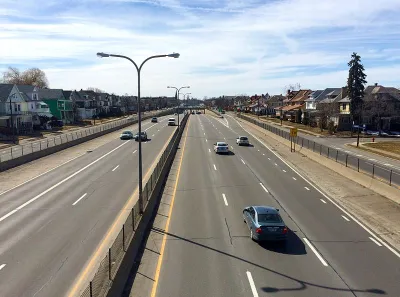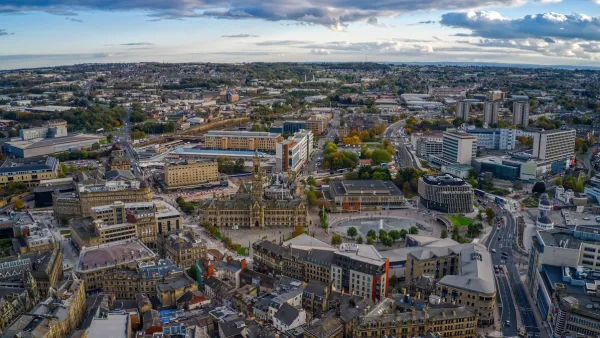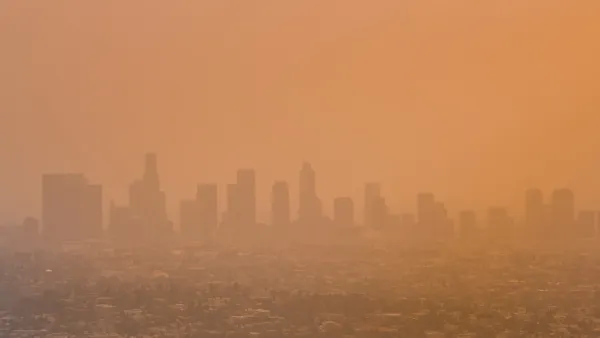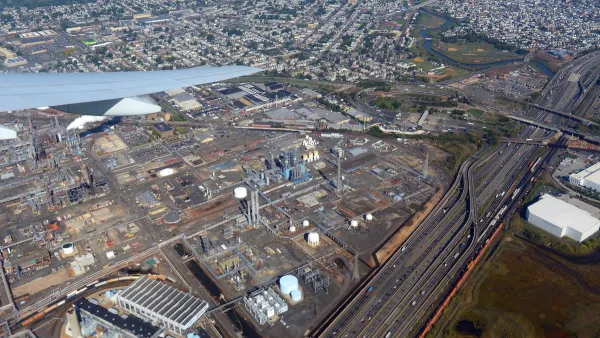State and local officials say the $1 billion project will heal neighborhoods divided by the Kensington Expressway, but community members say the proposed plan will exacerbate already poor air quality in the area.

When it was built in the 1950s, the Kensington Expressway cleaved neighborhoods on the East Side of Buffalo, New York, apart and led to air quality-related health concerns for nearby residents. A new $1 billion project funded by the Bipartisan Infrastructure Law proposes to sink a three-quarter mile section of the highway and cap it with a park to reconnect the neighborhoods and restore a historic boulevard. But some locals are fighting it, saying it will only make the pollution worse, reports Benjamin Schneider in a Bloomberg CityLab article. The project’s environmental assessment projected that car exhaust pushed out either end of the tunnel by the airflow caused by the moving vehicles “would increase pollution levels by about 6% over current conditions in the areas immediately adjacent to the tunnel entrances, even as air quality would improve slightly on the cap itself,” Schneider writes.
According to Schneider, “the debate underscores the challenges facing the US Department of Transportation’s Reconnecting Communities program … that’s designed to redress the harms of urban highways built across predominantly Black neighborhoods during the 1950s and ’60s. Some of the biggest and most costly projects being funded by the program are freeway caps — a popular strategy for knitting neighborhoods back together without reducing the volume of vehicles or the emissions they produce.” He reports that Philadelphia, Atlanta, and Austin are considering using funding from the federal infrastructure act program for freeway caps.
The project is one of many of a growing “cap and cover” movement that state and local governments are hopping aboard, as reported by the Daily Beast. But questions about the long-term implications of these projects remain. A Colorado Public Radio News article about Denver’s new 4-acre cap park above I-70 that opened last year states, “Air quality concerns are only one reason anti-highway activists now see Denver’s park as a cautionary tale.” Among others are fears that the new public green space and park amenities will spur gentrification and displacement of existing community members.
FULL STORY: A Highway Cap Divides the City It Was Designed to Reconnect

Analysis: Cybertruck Fatality Rate Far Exceeds That of Ford Pinto
The Tesla Cybertruck was recalled seven times last year.

National Parks Layoffs Will Cause Communities to Lose Billions
Thousands of essential park workers were laid off this week, just before the busy spring break season.

Retro-silient?: America’s First “Eco-burb,” The Woodlands Turns 50
A master-planned community north of Houston offers lessons on green infrastructure and resilient design, but falls short of its founder’s lofty affordability and walkability goals.

Test News Post 1
This is a summary

Analysis: Cybertruck Fatality Rate Far Exceeds That of Ford Pinto
The Tesla Cybertruck was recalled seven times last year.

Test News Headline 46
Test for the image on the front page.
Urban Design for Planners 1: Software Tools
This six-course series explores essential urban design concepts using open source software and equips planners with the tools they need to participate fully in the urban design process.
Planning for Universal Design
Learn the tools for implementing Universal Design in planning regulations.
EMC Planning Group, Inc.
Planetizen
Planetizen
Mpact (formerly Rail~Volution)
Great Falls Development Authority, Inc.
HUDs Office of Policy Development and Research
NYU Wagner Graduate School of Public Service




























